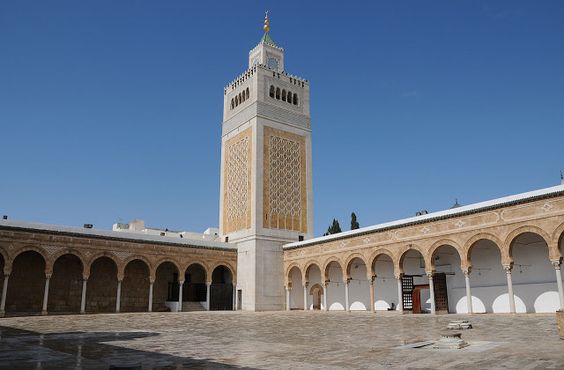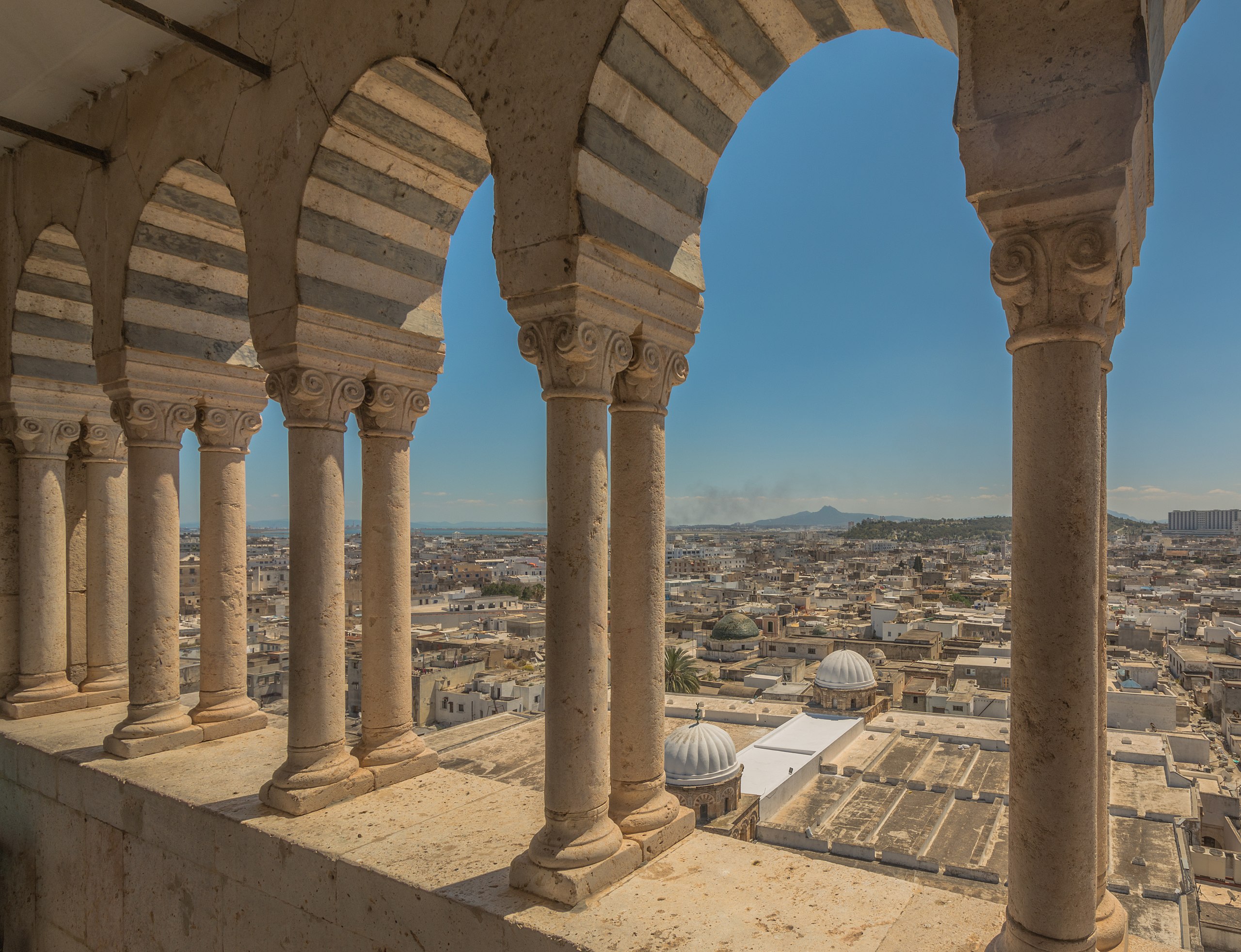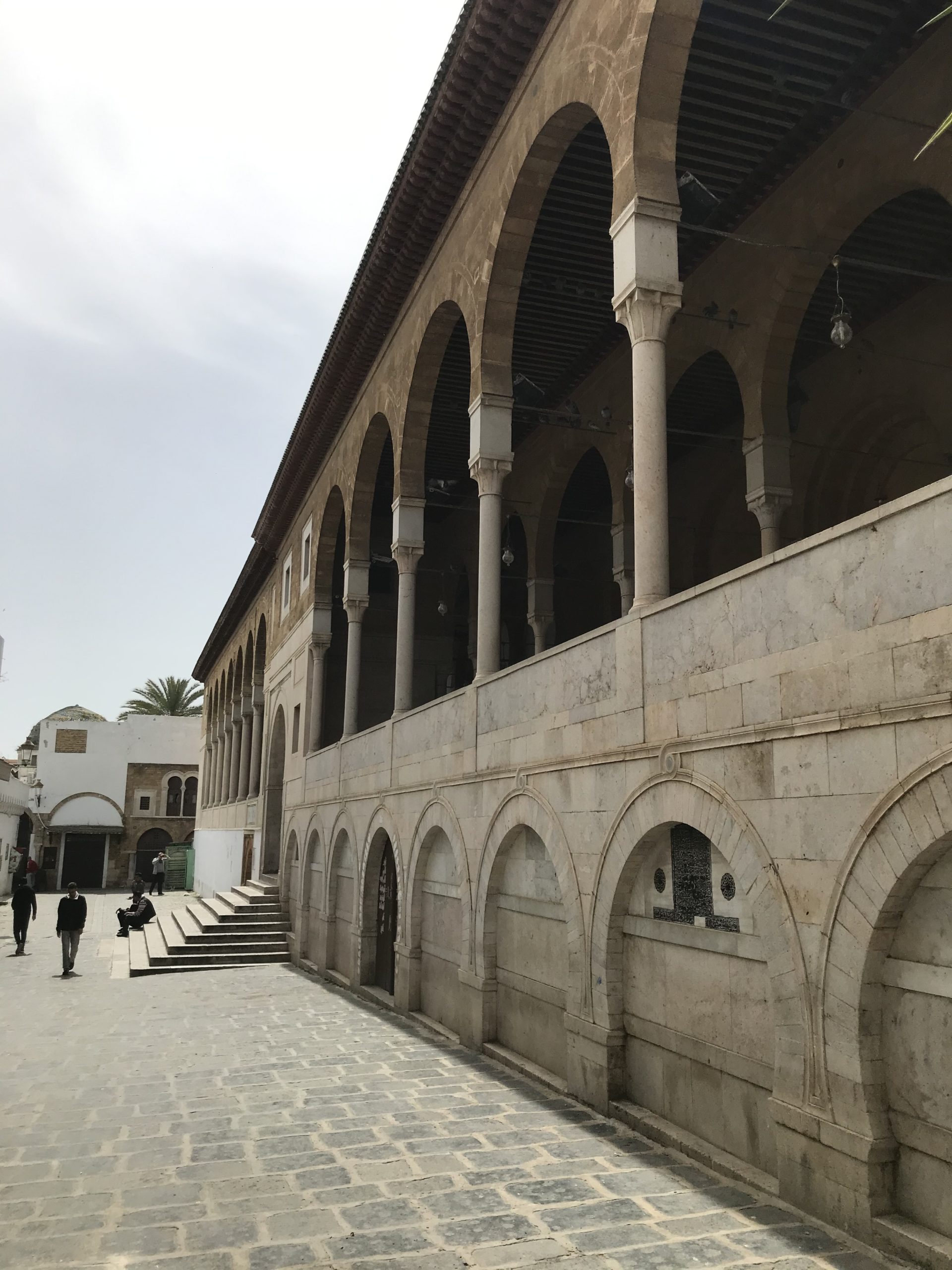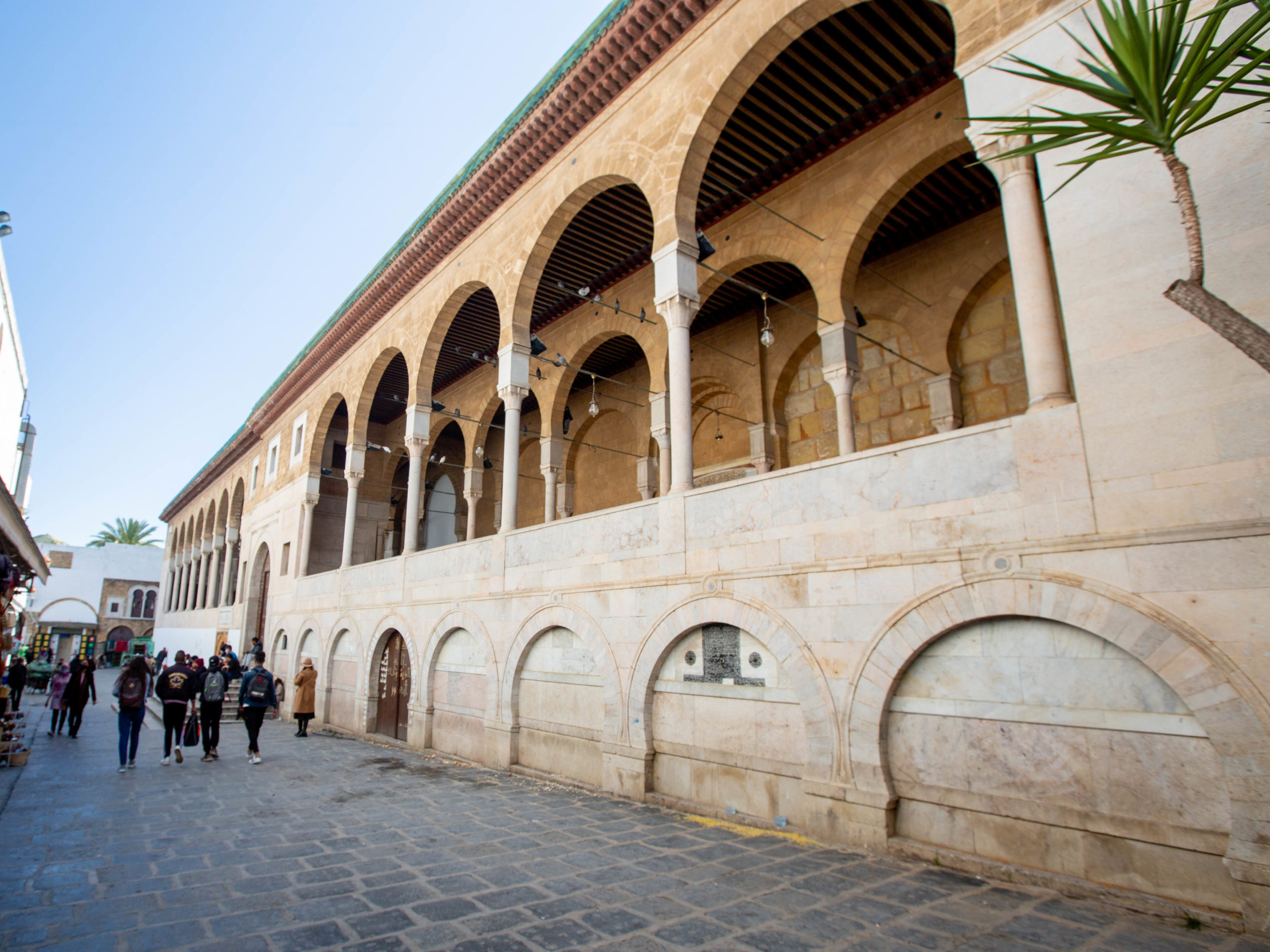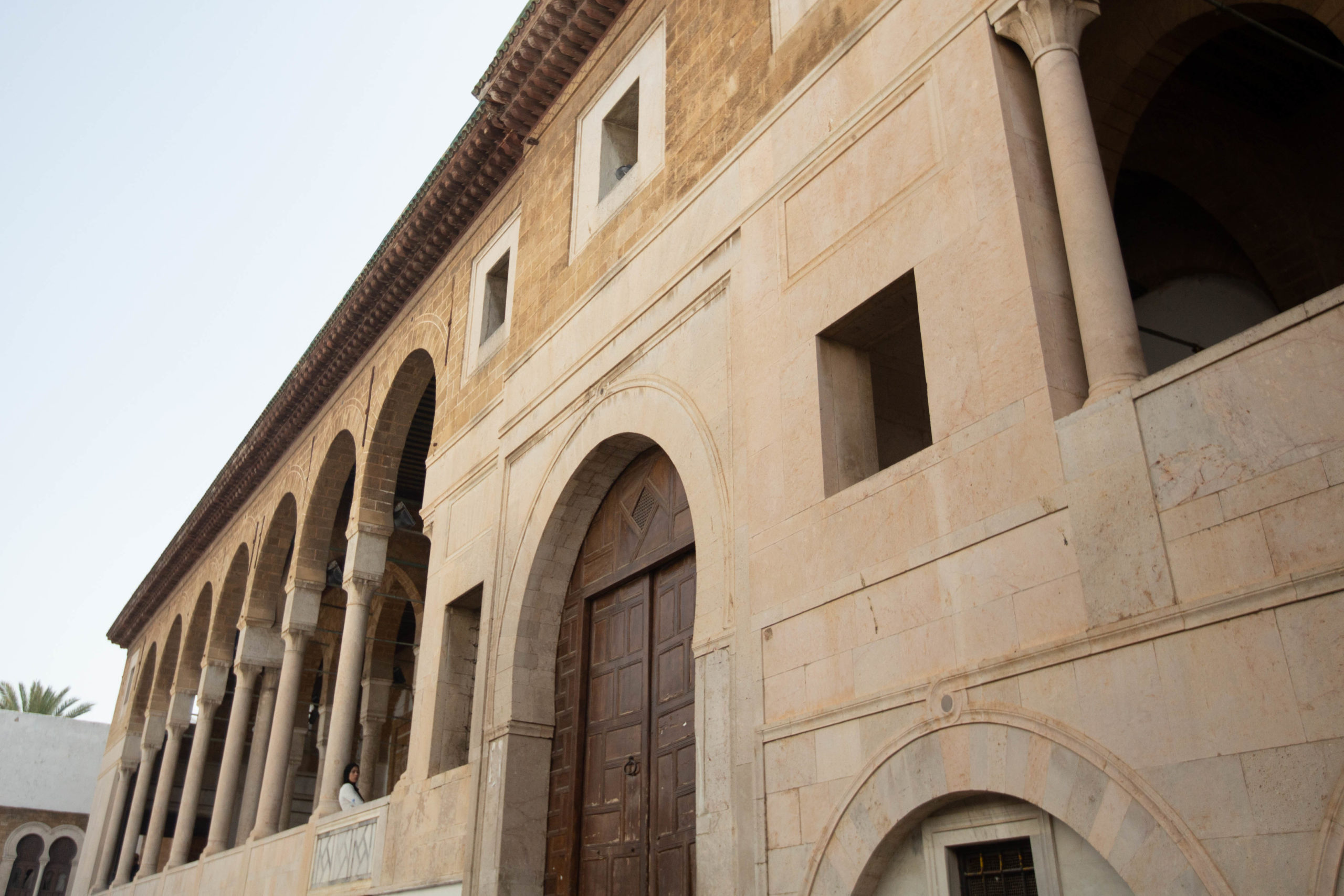
Al-Zaytuna Mosque

Al-Zaytuna Mosque
Or olive tree mosque, is the main mosque of the Medina and one of the most important ones of the Maghreb and even of the Arab world, historically and culturally.
Al-Zaytuna Mosque was founded in the seventh century by Hassan Ibn Numan on the remains of a Christian basilica. This is where Saint Olive would have been buried, according to legend, (Zaytuna also meaning olive in Arabic).
It is the second mosque built in Ifriqiya and the second largest in Tunisia, after that of Kairouan, then capital of the region. Almost nothing remains of this first building. Indeed, the Zaytuna was entirely rebuilt in 864. It extends over some 5000 m², has nine entrances and 184 Punic and Roman columns recovered mainly from the archaeological site of Carthage.
More than a place of prayer, the Zaytuna has been for centuries a place of knowledge. Many Muslim scholars came out of its ranks, the most famous being Ibn Arafa and Ibn Khaldun. In 1830, the muftis of the mosque promulgated a fatwa recognizing the validity of the heliocentric theory of Galileo.





